Warming up is an important part of any workout routine, whether you’re at home or in a gym. It helps prepare your body for the physical exertion. It also reduces the risk of injury and can even enhance your performance during the main workout. While warming up may seem like a mundane task, its importance cannot be overstated. In this content, we’ll walk you through various warm-up techniques and exercises. Specifically designed for working out at home. We’ll cover everything from cardiovascular warm-ups to dynamic stretches. We ensure you are fully prepared to tackle your workout with confidence and safety.
Duration and Stages of a Daily Warm Up
Duration: Aim for a 5-10 minute warm-up to gradually elevate your heart rate, increase blood flow to your muscles, and improve joint mobility.
Stages:
Light Cardio (2-3 minutes):
- Start with low-impact exercises: Marching in place, jogging in place, jumping jacks (low jumps initially), or arm circles are great options.
- Gradually increase the intensity: As your upper body warms up, pick up the pace slightly or choose exercises with a bit more movement. Then try full body warm up.
Dynamic Stretches (3-5 minutes):
- Focus on major muscle groups: Target your legs, glutes, core, back, chest, and shoulders.
- Move with controlled motions: Don’t bounce, and avoid static stretches (holding a stretch for a long time) during the warm-up.
Here are some examples:
- Leg Swings: Swing your legs forward and backward, keeping your core engaged.
- Arm Circles: Make large circles forward and backward with your arms.
- Torso Twists: Gently twist your torso from side to side, keeping your hips facing forward.
- Lunges with arm reaches: Lunge forward, reach your arms overhead, and switch legs.
- High Knees with arm pumps: Combine high knees with arm pumps for a full-body warm-up.
Exercise-Specific Drills (Optional – 1-2 minutes):
If your workout focuses on specific movements, incorporate some light drills:
- For running: Do some high knees, butt kicks, and skip steps in place.
- For strength training: Perform air squats, lunges, arm circles with light weights (if using), and torso rotations.
Tips:
- Listen to your body: Don’t push yourself too hard during the warm-up. It should feel good, not strenuous.
- Match the warm-up to your workout: If your workout is high-intensity, your warm-up can be more intense. For lower-intensity workouts, a gentler warm-up is enough.
- Hydrate: Take a few sips of water before you start your warm-up and throughout your workout.
Specific Warm-Up Variations for Different Workouts
High-Intensity Interval Training (HIIT):
- Focus on dynamic stretches with explosive movements: Do jumping jacks with raised arms, high knees with body twists. Moreover, jump lunges may also be a part of your workout.
- Incorporate short bursts of the actual HIIT exercises at a lower intensity: For example, do slow jump squats before jumping into your warm-up.
Focus on Dynamic Strength Training:
- Stretches that target the muscle groups you’ll be working on during your workout: For example, if you’re doing squats, include lunges with arm reaches and bodyweight squats.
- Light sets with body weight or minimal weight (if using): Perform a few sets of 8-12 repetitions of the exercises you’ll be doing later in your workout. But do it with lighter weights or just your body weight.
Yoga or Pilates:
- Gentle cardio: Start with light cardio like marching in place or arm circles for a few minutes.
- Focus on dynamic stretches that mimic yoga or Pilates movements: Include neck rolls, shoulder rolls, and spinal twists. And do leg swings with controlled motions.
- Sun salutations (optional): If you’re familiar with sun salutations, they’re a great way to warm up at home the entire body for yoga or Pilates.
Dance Fitness:
- Light cardio with some dance moves: Start with simple movements like jumping jacks, arm circles, and leg swings. Gradually incorporate basic dance moves like grapevines, mambos, and cha-cha-chas.
- Mimic low-impact dance moves: If the dance style involves high jumps or complex footwork, practice simpler variations.
Remember: These are just examples. Add your warm up at home to your specific workout and fitness level. Always focus on proper form and listen to your body.
More Tips:
- Consider using a foam roller (optional): Self-myofascial release with a foam roller can help your movement and blood flow.
- Dynamic stretches vs. Static stretches: Emphasize dynamic stretches during warm up at home. Save static stretches for your cool-down routine.
Advanced Warm-Up Techniques to Warm Up at Home:
Progressive Warm-Up:
Instead of constant intensity throughout the warm up at home, gradually increase the intensity as your body warms up. This can involve:
- Starting with slower, larger movements and progressing to faster, smaller movements (e.g., slow arm circles to faster arm swings).
- Increasing the range of motion in your dynamic stretches as your body loosens up.
- Adding light resistance (optional) using dumbbells or resistance bands for specific stretches or exercises in the later stages of your warm-up.
Cardiovascular Warm-up:
Before diving into any strenuous activity, it’s essential to elevate your heart rate gradually. This can be achieved through cardiovascular exercises that increase blood flow and warm up your muscles. Here are some effective options to warm up at home:
- Jumping Jacks: Start with a classic exercise like jumping jacks. Begin with a moderate pace and gradually increase your speed as you go. Aim for 2-3 sets of 30-60 seconds each.
- High Knees: Stand in place and jog lightly while lifting your knees as high as possible. Pump your arms to increase intensity. Perform 2-3 sets of 30-60 seconds.
- Jump Rope: If you have a jump rope, use it for 5-10 minutes to get your heart rate up. Alternatively, mimic the motion without the rope for the same duration.
Dynamic Stretches:
Dynamic stretches involve moving parts of your body through a full range of motion. Unlike static stretching, which is better suited for cooldowns, dynamic stretches help improve flexibility, mobility, and blood circulation. Here are some dynamic stretches you can incorporate into your warm-up routine:
- Arm Circles: Stand with your feet shoulder-width apart and extend your arms straight out to the sides. Make small circular motions with your arms, gradually increasing the size of the circles. Repeat for 10-15 reps in each direction.
- Leg Swings: Hold onto a sturdy surface for balance and swing one leg forward and backward in a controlled motion. Aim for 10-15 swings per leg, then switch to side-to-side swings.
- Torso Twists: Stand with your feet hip-width apart and your arms extended out to the sides. Twist your torso to the left while keeping your hips facing forward, then return to the center and twist to the right. Repeat for 10-15 reps on each side.
Mobility Exercises:
Mobility exercises focus on improving joint mobility and flexibility, which are essential for proper movement patterns and injury prevention. Incorporating these exercises into your warm-up routine can help activate and prepare your muscles for the upcoming workout. Here are some mobility exercises to try:
- Hip Circles: Stand with your feet shoulder-width apart and place your hands on your hips. Slowly rotate your hips in a circular motion, first clockwise and then counterclockwise. Aim for 10-15 reps in each direction.
- Shoulder Rolls: Stand tall with your arms relaxed at your sides. Roll your shoulders forward in a circular motion, gradually increasing the size of the circles. After 10-15 reps, reverse the direction and roll your shoulders backward.
- Ankle Circles: Sit on the floor with your legs extended in front of you. Lift one foot off the ground and begin rotating your ankle in a circular motion. Perform 10-15 circles in each direction, then switch to the other ankle.
Activation Exercises:
Activation exercises target specific muscles or muscle groups to improve neuromuscular activation and stability. By priming these muscles before your workout, you can enhance their recruitment during exercises and reduce the risk of compensation patterns or injury. Here are some activation exercises you can include in your warm-up:
- Glute Bridges: Lie on your back with your knees bent and feet flat on the floor. Press through your heels to lift your hips off the ground, squeezing your glutes at the top. Lower back down with control and repeat for 10-15 reps.
- Plank Variations: Perform a series of plank variations, such as forearm planks, side planks, and planks with shoulder taps. Hold each variation for 20-30 seconds while maintaining proper form and engaging your core muscles.
- Band Pull-Aparts: Hold a resistance band with both hands shoulder-width apart. Keeping your arms straight, pull the band apart by squeezing your shoulder blades together. Slowly return to the starting position and repeat for 10-15 reps.
Sport-Specific Drills:
If you have a specific sport or activity that you’re training for, incorporating sport-specific drills into your warm-up can be highly beneficial. These drills mimic the movements and demands of your chosen activity, helping you prepare both physically and mentally. Here are some examples of sport-specific warm up at home drills:
Soccer:
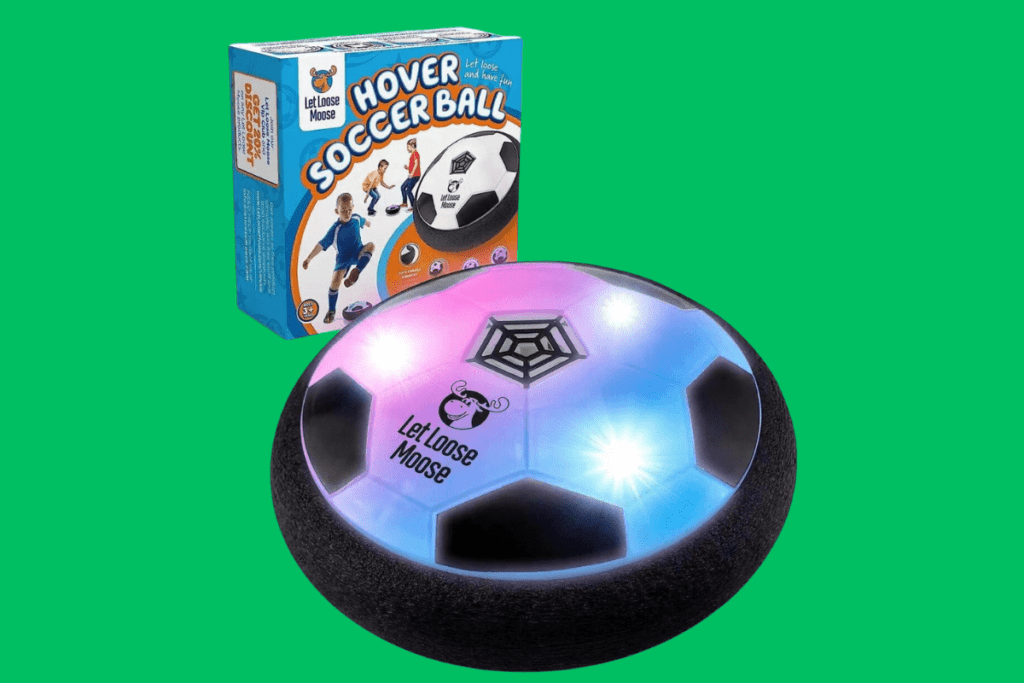
Dribbling drills: Practice dribbling the ball while weaving in and out of cones or obstacles to enhance foot control and coordination. Great for incorporating movement into your warm up at home routine.
Passing and receiving: Perform short passing sequences with a partner, focusing on accuracy and control—perfect for improving reaction time and coordination in full body warm up sessions.
Shooting practice: Take shots on goal from various distances and angles, working on your technique and power. A good way to activate lower-body muscles in your at home workout warm up.
Basketball:

Layup drills: Practice layups from both sides of the basket, focusing on footwork and finishing with control. This helps improve lower-body coordination and balance, which are key to any full body warm up.
Shooting drills: Work on your shooting form and accuracy from different spots on the court, including mid-range and three-point shots. A great upper-body and core activation activity during your at home workout warm up.
Defensive slides: Perform defensive slide drills to improve lateral quickness and agility on defense—perfect for a daily warm up to enhance your footwork and lower-body activation.
Running:

Dynamic Warm Up at Home Drills: Incorporate high knees, butt kicks, and leg swings to prepare your muscles for running. These dynamic movements help activate your core, improve blood circulation, and increase flexibility, making them perfect for any warm up at home routine.
Stride Variations:
Practice different stride lengths and speeds to prepare your body for the intensity of your run. This variation not only conditions your legs and core but also supports proper form and running economy—ideal for a full body warm up.
Hill Sprints:
If possible, include a few short hill sprints in your at home workout warm up to activate your leg muscles and improve power output. This advanced technique primes your glutes, calves, and hamstrings for stronger performance.
For Boxing:
Perform shadowboxing with basic punches, footwork drills, and light jumping jacks with arm punches. This upper body warm up engages your shoulders, chest, and arms while also activating your cardiovascular system.
Mental Preparation:
Visualization:
Take a few moments to visualize yourself performing the workout successfully. Imagine yourself feeling strong, coordinated, and in control. A focused mind boosts motivation and enhances performance.
Set Intentions:
Set clear intentions for your workout, whether it’s focusing on improving form, pushing your limits, or simply enjoying the movement. This mindful approach turns your daily warm up into a mental primer.
Safety Considerations:
You must follow these primary steps to effectively warm up at home. Proper preparation is key to preventing injuries and ensuring an efficient workout.
Equipment Suggestions:
While not mandatory, you can use the following equipment to enhance your at home workout warm up:
- Yoga mat
- Resistance bands
- Light dumbbells
- Foam rollers

Listen to Your Body:- It’s important to avoid pushing yourself too hard during the warm up at home. If you experience any pain, stop the exercise and consult a doctor or physical therapist.
Focus on Proper Form
Maintain good form throughout your warm-up exercises to avoid injury. Don’t sacrifice form for speed or range of motion.
Warm Up at Home Customization
Consider Weather Conditions
If it’s cold, extend your warm-up or incorporate exercises that generate more heat, like jumping jacks or jumping rope (if you have one). For hot weather, focus on staying hydrated and consider starting with lighter cardio.
Listen to Your Body’s Specific Needs
If you have any tight muscles or areas prone to injury, target those areas with specific dynamic stretches during your warm-up.
Pre-Hab Exercises (Optional)
If you’re recovering from an injury or have any limitations, consult a physical therapist for pre-hab exercises to incorporate into your warm-up routine.
Warm Up at Home: Incorporating Technology
Warm-Up Apps
Explore fitness apps that offer guided warm-up routines tailored to different workout types and fitness levels.
Workout Videos
Many workout videos on platforms like YouTube include warm-up routines as part of the program.
Warm Up at Home: Making it Fun and Engaging
Warm Up with a Friend
Having a workout buddy can make warming up more enjoyable and keep you accountable.
Put on Some Music
Play upbeat music that motivates you and gets you in the mood for a workout.
Focus on Your Breath
Pay attention to your breath throughout the warm-up. Inhale deeply through your nose and exhale slowly through your mouth.
Warm Up at Home: Unique Techniques
Foam Rolling with Variations
Explore different foam rolling techniques beyond basic rolling. Look into self-myofascial release tutorials targeting specific muscle groups relevant to your workout.
Activation Drills
Perform isolated exercises with light weights or resistance bands to activate specific muscle groups before your workout.
Yoga or Pilates Flow (Short Version)
If you have some experience with yoga or Pilates, consider incorporating a short flow sequence that focuses on dynamic stretches and movements that prepare your body for your workout.
Warm Up at Home: Mind-Body Connection
Mental Preparation
Mentally prepare yourself for the workout ahead. Take a few moments to center your focus and visualize yourself performing each exercise with proper form and technique.
Meditation (Short)
Spend a few minutes before your workout practicing mindfulness meditation.
Positive Affirmations
Repeat positive affirmations to yourself before your workout.
Warm Up at Home: Remember
Safety First
These techniques might not be suitable for everyone. If you experience any pain, stop the exercise and consult a healthcare professional.
Listen to Your Body
It’s important to find what works best for you. Experiment with different warm-up approaches and see what makes you feel most prepared and energized for your workout.
Warm Up at Home: Conclusion
I hope this exploration of unconventional warmup techniques inspires you to create a personalized and effective routine for at home workout warm up!
It is important to warm up daily before a home workout. It improves efficiency, avoids injury, and makes you enjoy the workout more. You can make sure your body is ready for your workout by doing dynamic stretches, mobility exercises, activation drills, sport-specific drills, and cardiovascular exercises. You should also focus on building a strong mind-body link. Remember to listen to your body, adjust the intensity as needed, and enjoy the process of preparing for a successful workout session.
💌 Want more expert fitness tips like this straight to your inbox?
Subscribe to our free newsletter for daily guidance, home workout plans, and motivation to stay consistent on your fitness journey.

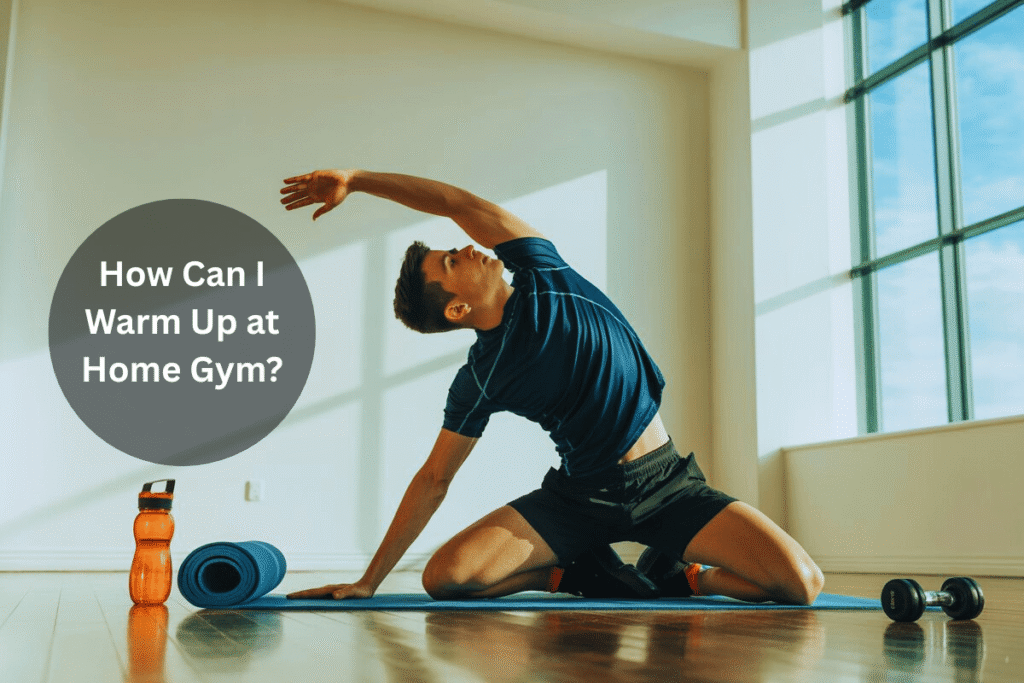
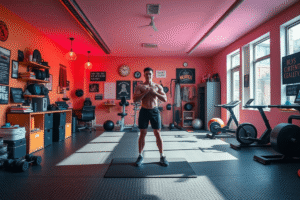


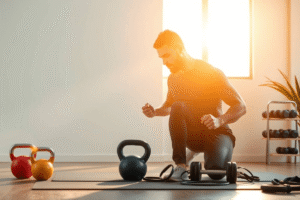
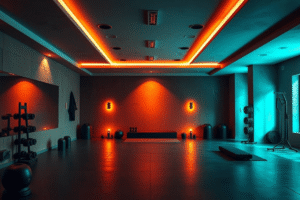
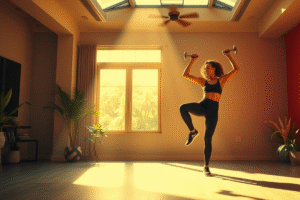


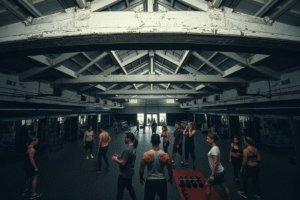
41 Comments
Heya i am for the first time here. I found this board and I find It really useful & it
helped me out a lot. I hope to give something back and help others
like you aided me.
Thanks for yout comment
escitalopram 20mg brand – escitalopram 10mg cheap lexapro pill
buy cenforce paypal – cenforce 100mg uk cenforce 100mg pill
buy cenforce medication – https://cenforcers.com/ purchase cenforce
cialis overnight deleivery – https://ciltadgn.com/# is tadalafil the same as cialis
is there a generic equivalent for cialis – https://ciltadgn.com/# india pharmacy cialis
cialis price walmart – https://strongtadafl.com/# order cialis online no prescription reviews
us pharmacy prices for cialis – https://strongtadafl.com/# buy cialis online usa
order viagra by mail – sildenafil 50 mg buy viagra online australia
buy viagra mastercard – buy viagra hawaii buy viagra rio janeiro
More posts like this would force the blogosphere more useful. https://buyfastonl.com/furosemide.html
I’ll certainly return to review more. https://gnolvade.com/
Greetings! Extremely serviceable suggestion within this article! It’s the crumb changes which will turn the largest changes. Thanks a lot for sharing! site
With thanks. Loads of expertise! natural alternatives to prednisone
I’ll certainly carry back to be familiar with more. https://ursxdol.com/sildenafil-50-mg-in/
More articles like this would frame the blogosphere richer. https://prohnrg.com/product/lisinopril-5-mg/
I couldn’t hold back commenting. Warmly written! https://prohnrg.com/product/cytotec-online/
More posts like this would prosper the blogosphere more useful. https://aranitidine.com/fr/clenbuterol/
This is the amicable of topic I have reading. https://aranitidine.com/fr/viagra-100mg-prix/
More articles like this would pretence of the blogosphere richer. https://ondactone.com/spironolactone/
The depth in this ruined is exceptional. https://ondactone.com/product/domperidone/
I couldn’t weather commenting. Adequately written!
nexium canada
Thanks on putting this up. It’s evidently done.
how much is tetracycline
The sagacity in this ruined is exceptional. https://www.usachanpeace.com/feed/feed2js.php?src=https://www.facer.io/u/rybelsus
This is the kind of post I find helpful. http://bbs.yongrenqianyou.com/home.php?mod=space&uid=4271949&do=profile
Greetings! Jolly serviceable suggestion within this article! It’s the little changes which will obtain the largest changes. Thanks a lot for sharing! http://web.symbol.rs/forum/member.php?action=profile&uid=1171354
dapagliflozin 10 mg canada – https://janozin.com/ generic dapagliflozin 10mg
dapagliflozin order online – cost forxiga 10 mg purchase dapagliflozin sale
purchase orlistat for sale – janozin.com xenical 60mg ca
buy orlistat medication – buy generic orlistat over the counter order xenical 60mg generic
Greetings! Very productive recommendation within this article! It’s the crumb changes which choice obtain the largest changes. Thanks a portion quest of sharing! http://www.01.com.hk/member.php?Action=viewprofile&username=Olviqp
More posts like this would bring about the blogosphere more useful. https://myvisualdatabase.com/forum/profile.php?id=118756
You can keep yourself and your family by way of being heedful when buying medicine online. Some pharmaceutics websites function legally and offer convenience, reclusion, cost savings and safeguards to purchasing medicines. buy in TerbinaPharmacy https://terbinafines.com/product/imitrex.html imitrex
You can protect yourself and your ancestors by way of being wary when buying pharmaceutical online. Some pharmacopoeia websites operate legally and put forward convenience, secretiveness, cost savings and safeguards over the extent of purchasing medicines. buy in TerbinaPharmacy https://terbinafines.com/product/zantac.html zantac
Palatable blog you have here.. It’s intricate to on high quality belles-lettres like yours these days. I justifiably recognize individuals like you! Take vigilance!! aranitidine
This website absolutely has all of the bumf and facts I needed about this case and didn’t comprehend who to ask. TerbinaPharmacy
I couldn’t hold back commenting. Warmly written!
I’ll certainly carry back to review more.
Insgesamt hat Scorsese mehr als 60 Filme gedreht und seine Arbeit wird auch in Zukunft die Filmindustrie beeinflussen. Nach seinem Studium an der New York University begann er seine Karriere als Regieassistent und drehte seinen ersten Spielfilm „Who’s That Knocking at My Door“ im Jahr 1967. Der Film zeigt auch die dunklen Seiten des Glücksspiels, wie Korruption, Geldwäsche und Betrug. Der Film zeigt seinen Aufstieg und Fall, seine Beziehungen und seine Konflikte mit der Mafia und dem Gesetz. Der Film zeigt das Leben von Sam „Ace“ Rothstein, einem jüdisch-amerikanischen Glücksspiel-Experten, der das Tangiers Casino in Las Vegas für die Chicago Outfit betreibt.
Nach „Lexikon des internationalen Films“ zeigt der Film analytisch die Spielerstadt Las Vegas, sowie beschreibt die Wirkung von Macht, Geld und Stolz, wobei man dennoch keinen Zugang zu den Emotionen der Hauptfiguren erhalte. Das Mafia-Syndikat Chicago Outfit beauftragt ihn damit, den täglichen Hotel- und Casinobetrieb im Tangiers Spielcasino von Las Vegas zu leiten. Die Handlung im Film „Casino“ erzählt die Geschichte der Mafia, die den Spieler Sam „Ace“ Rothstein (Robert De Niro) dazu bringt, ein Spielcasino in Las Vegas zu betreiben.
Sie betr�gt ihn mit seinem Partner, Aces unaufhaltsamer Abstieg beginnt? Obwohl man gemeinsam mit Rothstein das Gef�hl hat, um ein paar wichtige Lektionen des Lebens reicher geworden zu sein, bleibt die Frage nach dem Sinn. Casino zeigt eine Industrie unter Ratio�na�li�sie�rungs�zw�ngen, er zeigt, was sich unter den feinen Anz�gen und Smokings, die auch die Mafiosis tragen, verbirgt. An der Ober�fl�che ist der Mafiosi ein Rebell, irgendwie auch ein kleiner Robin Hood, und �berdies ein Fami�li�en�vater, der seinen Clan zusam�men�h�lt. Kaum eine zweite Insti�tu�tion zeigt die Schat�ten�seiten des Kapi�ta�lismus in �hnlicher Deut�lich�keit.
References:
https://online-spielhallen.de/pelican-casino-promo-codes-ihr-umfassender-leitfaden/
Für die Beanspruchung des Willkommensbonus benötigen Sie keinen speziellen Bonus Code. Benötige ich zur Aktivierung des Willkommensbonus einen Löwen Play Bonus Code? Sämtliche Transaktionen werden sofort bearbeitet. Die genaue Anzahl der zugeschriebenen Freispiele hängt von der Höhe Ihrer Einzahlung ab.
Löwen Play konnte eine der begehrten deutschen Lizenzen für Glücksspiel erhalten. Ein besonderes Highlight ist, dass Löwen Play sämtliche Transaktionen gebührenfrei anbietet. Dank einfacher und schneller Transaktionen kannst du dich bei Löwen Play darauf verlassen, dass Einzahlungen sofort auf deinem Konto verfügbar sind. Gerade die Verfügbarkeit von PayPal sticht heraus, da dieser beliebte Zahlungsdienstleister lange Zeit vom deutschen Glücksspielmarkt abwesend war. Außerdem ist es auch ein Qualitätsmerkmal, denn die Hersteller von Slots mit besten Grafiken und Top Features stellen ihre Spiele nur seriösen Glücksspielanbietern zur Verfügung.
Man kann oben direkt neben dem Profil auf „Einzahlen“ klicken und eine Transaktion von mindestens 10 € durchführen. Erst im Anschluss kann das Guthaben aufgeladen werden und bereits für die erste Einzahlung gibt es einen Willkommensbonus. Eine native App wird derzeit nicht angeboten, jedoch ist ein Download nicht notwendig, denn nach der Anmeldung stehen alle Funktionen auch auf der mobilen Webseite zur Verfügung. Sofern die Verifizierung bereits abgeschlossen ist, kann man nun die Spielautomaten starten, das Guthaben aufladen oder auf alle anderen Funktionen zugreifen. Das geht bei dem Glücksspielanbieter in wenigen Schritten, die man nachfolgend finden kann.
References:
https://online-spielhallen.de/drip-casino-cashback-eine-umfassende-analyse/